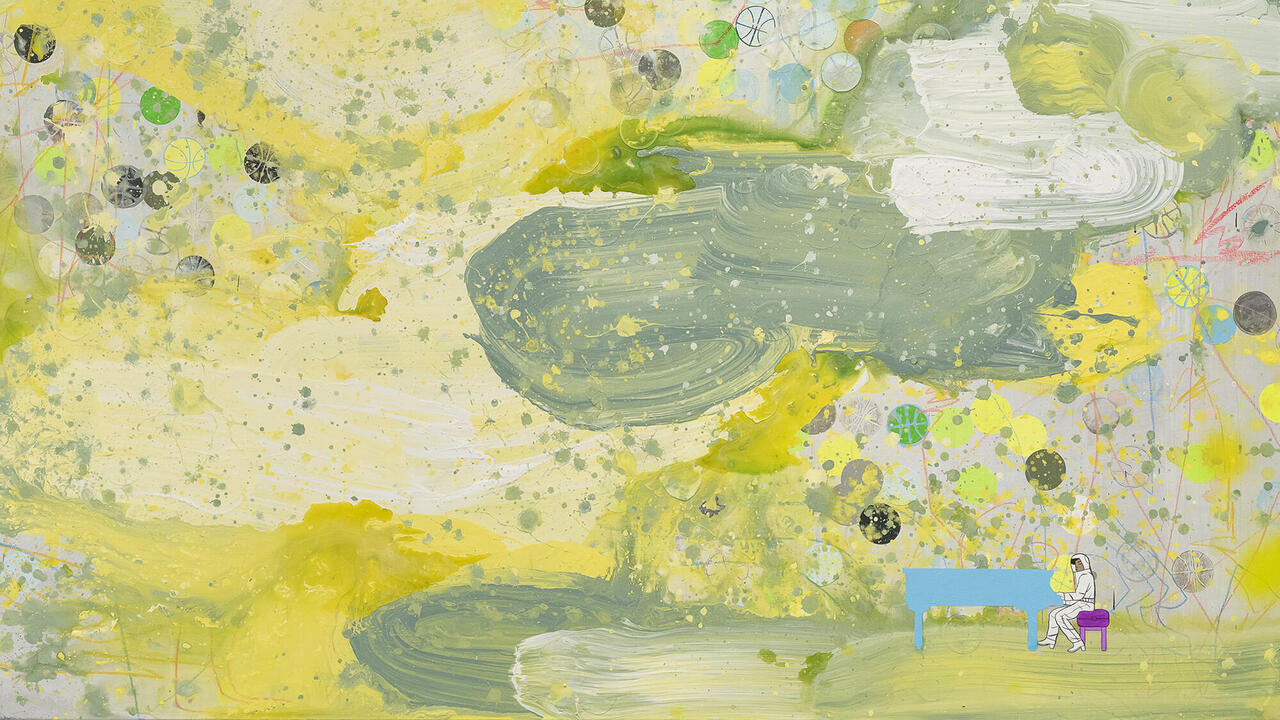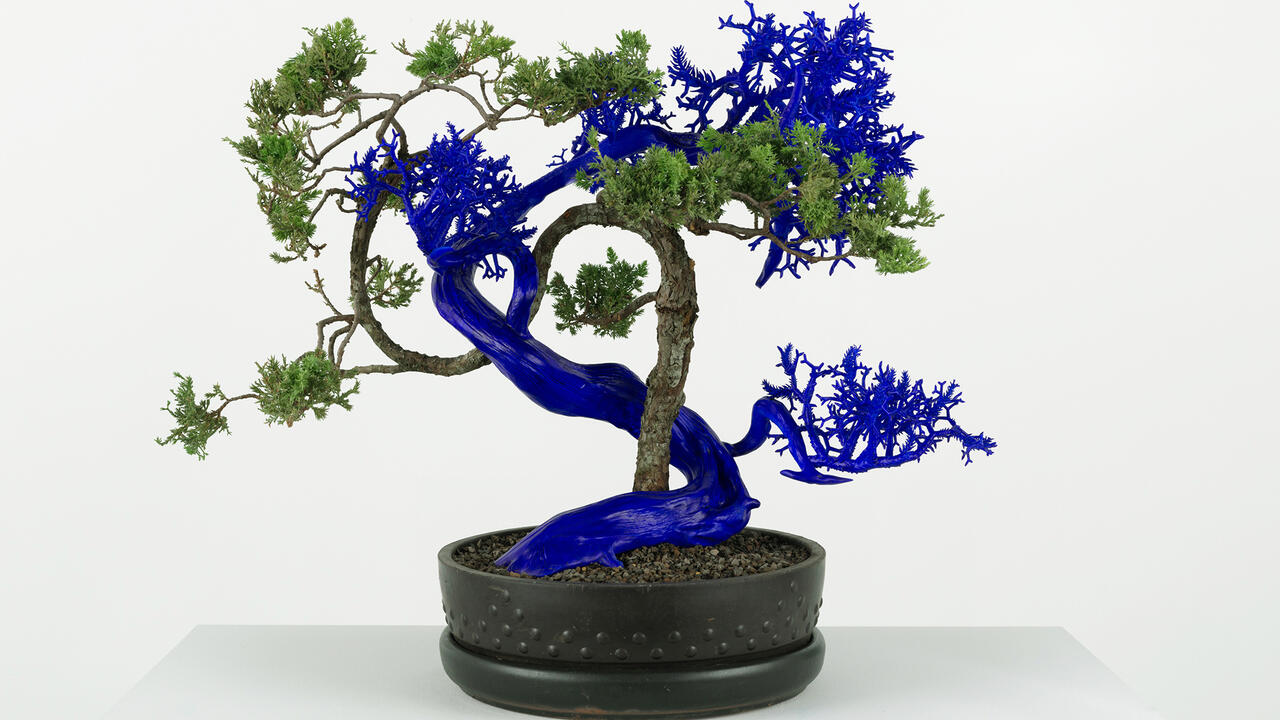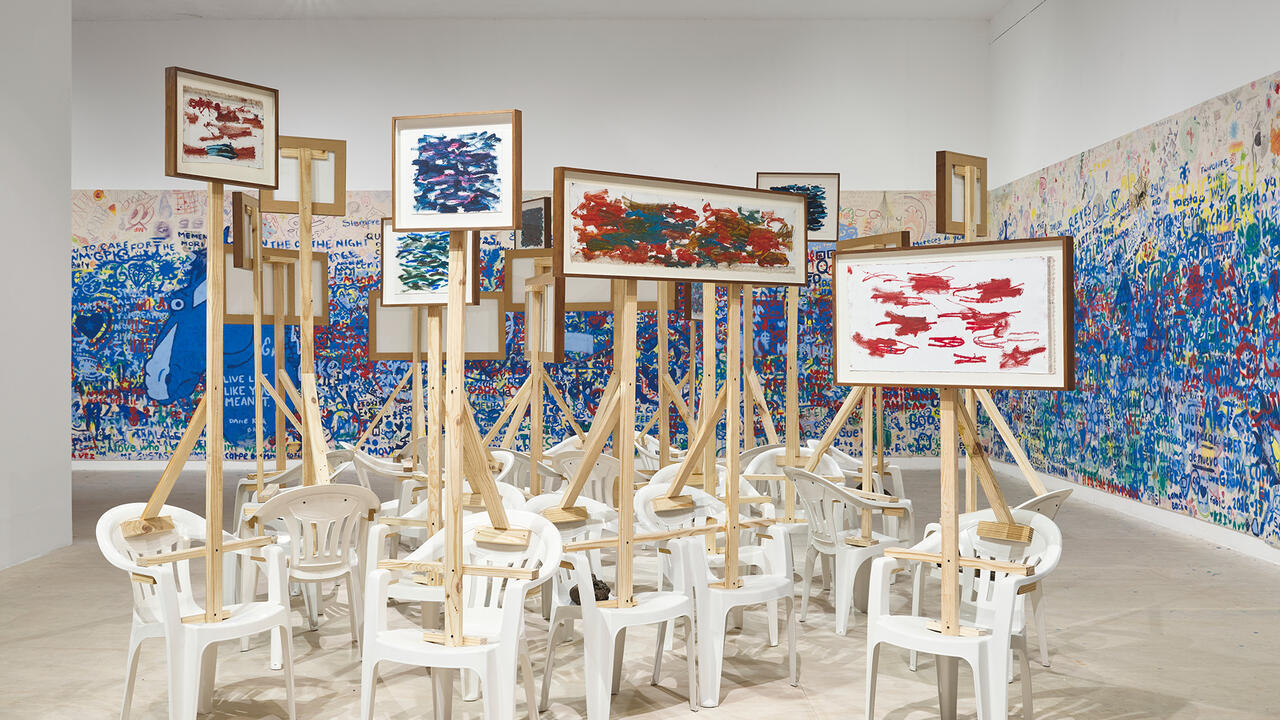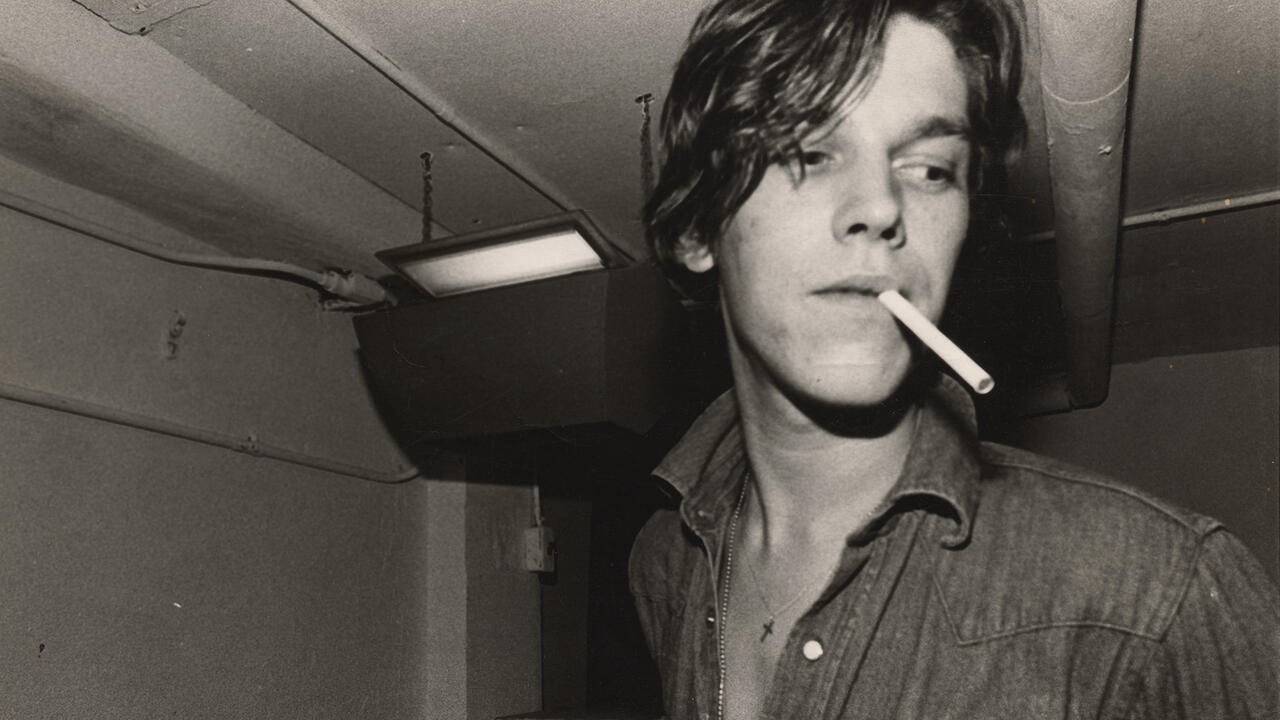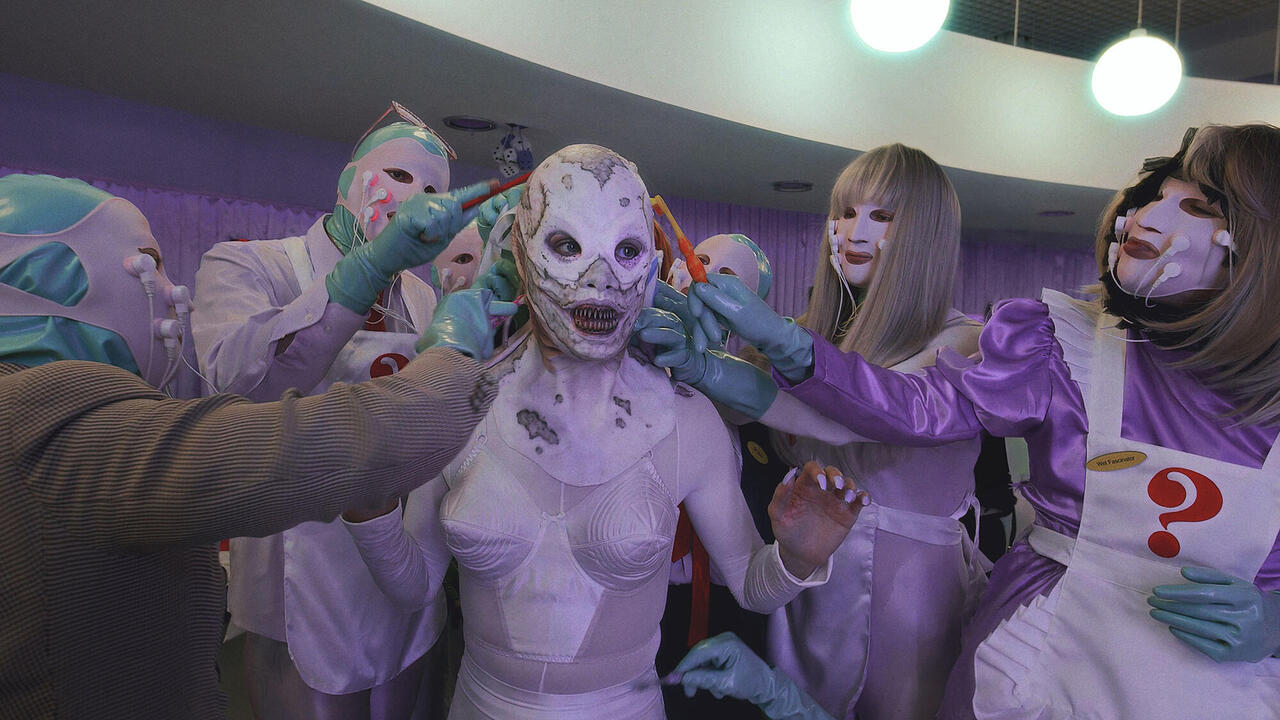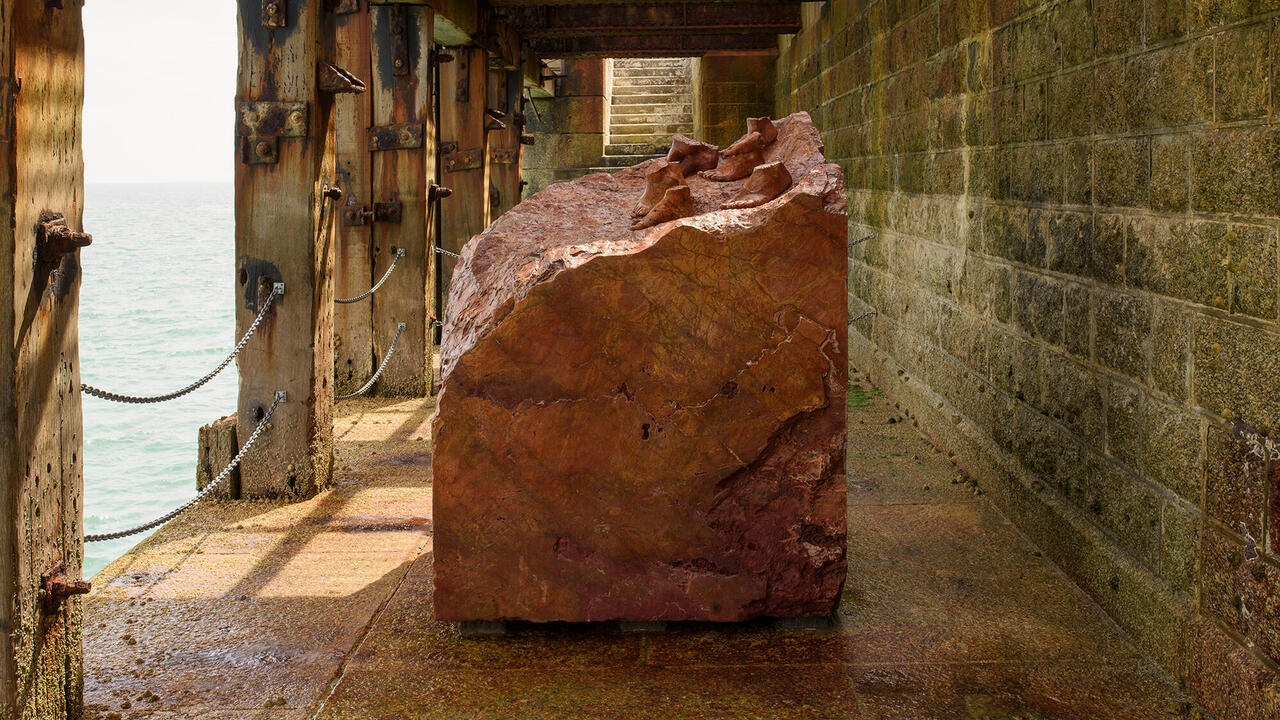‘Moveables’ Imagines Our Bodies In Entangled Coexistence
A group exhibition at Institute of Contemporary Art, Philadelphia, reconfigures our engagement with the structures and systems that support and shelter us
A group exhibition at Institute of Contemporary Art, Philadelphia, reconfigures our engagement with the structures and systems that support and shelter us

Technically, the term ‘moveables’ refers to the belongings you can take with you when you leave a residence – anything, so to speak, that is not nailed down. But what if we envision the body as the edifice? What then becomes adaptable or interchangeable? For ‘Moveables’ at the Institute of Contemporary Art in Philadelphia, co-curators Cole Akers and Alex Klein use the titular term as a metaphorical framework, assembling artworks that reconfigure our engagement with the structures and systems that support and shelter the human body.

The presentation has a vaguely theatrical quality, as if the works on display are a collection of props and sets awaiting performers. Ken Lum’s two-part installation of catalogue-perfect furnishings, The Curse Is Come Upon Me. and The Photographer or The Mirror? (both 2023), face and abut mirrors on either side of a stylishly painted partition. His obdurately symmetrical arrangements of sofas and end-tables transform the idealized interiors of showrooms and family sitcoms into illusions of hermetically sealed enclosures, suggesting that seductive ideas of comfort and aspiration can also entrap.

Nearby, the collapsed lighting rig of Nikita Gale’s PRIVATE DANCER (2020), a heap of aluminium trusses tangled with cables, occupies a darkened and walled-off corner of the gallery. Still operating among the ruins, dynamic spotlights dart around like skittish searchlights surveilling the room. The lights are, in fact, programmed to accompany an inaudible Tina Turner soundtrack, but the only evidence of performers are the fleeting shadows of gallery-goers cast onto the walls. Evoking figures through their absence, Gale’s and Lum’s vacant installations of ready-made furniture and stage infrastructure offer post-human visions of our stuff without us.

Human presence is more evident, and also more mutable, in the hybridized sculptures of Jes Fan, Hannah Levy and Oren Pinhassi. For the wall-mounted Left and right halves of torso, stacked (2022), Fan refashioned two Aqua Resin casts of his own body as a bivalve, transforming the already shell-like forms into a protective casing that harbours a dimpled pearl of handblown glass. He enhances the sculpture’s biomorphism by injecting the glass orb with a silicone typically used in plastic surgery and selenium, a mineral found abundantly in oysters and essential to humans, yet harmful in excess. His recombinant forms muddle the boundary between ‘natural’ and ‘artificial’, while also hinting at the prospects and perils of such modifications.

Pinhassi and Levy surreally reinterpret functional objects to incorporate human, animal and plant attributes, fetishizing and disrupting our engagement with the utilitarian. In Pinhassi’s Untitled (2019), store-bought toothbrushes hang from perforated discs that sprout like lotus pods from a series of patina-green stems. Across multiple works, Levy fortifies sleekly polished handrails with spiky thorns and wraps a skeletal chandelier in a reptilian corset. The stainless-steel stilettos of her Untitled (2023), outfitted with golden spurs and mounted atop stylized raptor legs and talons, could serve as prosthetics or stilts if they were not so unwieldy. More explicitly than any other work in the exhibition, the heels hint at how our bodies might be retrofitted, however fantastically, to accommodate some future environmental reality.

As underscored by the barbs on Levy’s handrails, the potentially toxic minerals in Fan’s cyst-like sculptures or the harsh glare of Gale’s spotlights, our relationship to our environs is often fraught with threat and risk. Collectively, the works in ‘Moveables’ suggest that we are not as divorced from the world outside of our bodies as we might like to be. While some of the art on display evinces our increasing tendency towards self-alienation, the show also provides models for a more entangled coexistence. As the disastrous effects of our built environment accelerate climate change, we would benefit from looking outside ourselves for inspiration. There’s no other planet – not yet, at least – to which we can relocate. We have to adapt.
‘Moveables’ is on view at Institute of Contemporary Art, Philadelphia, until 17 December.
Main image: ‘Moveables’, 2023, exhibition view. Courtesy: the artist and Institute of Contemporary Art, Philadelphia











